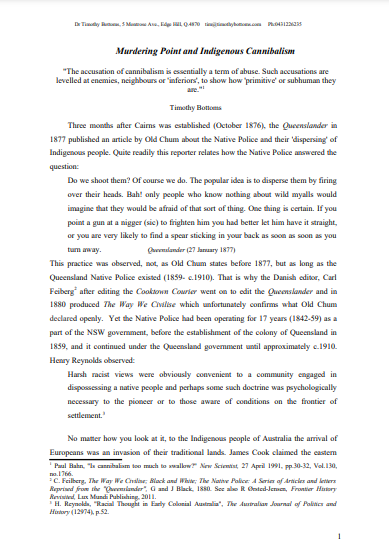Making a difference also in Far North Queensland is veteran historian, Timothy Bottoms, who has looked again at the story of Murdering Point, about an incident following a shipwreck near Innisfail in 1878. There have been hints – and sometimes more than that – that the local Indigenous people cannibalised the remains of two survivors.
Bottoms’ recent research, using sources from not long after the Murdering Point incident, examines why accusations of cannibalism became a common trope in White understanding of Black culture. Here’s a key paragraph (page 4; we have made a minor edit for clarity):
During my historical research and writing over the last 30 years I could not find any primary source documents that actually witnessed cannibalism. What I did find was that the Rainforest Bama practised ritualistic, but not gustatory cannibalism. The white intruders needed to have an excuse for their own barbaric behaviour to lay at the Indigenous people’s door – the trouble is that we do not have any primary source documents that support this historical impression of outright cannibalism. You will notice in the primary sources, where claims of “cannibalism” are made, it is nearly always third hand; no one actually witnesses the act of a cannibalistic feast. If you wanted to take the land, the Indigenous people had to be portrayed as less than human. All this was to prejudice settlers against the traditional owners, by the promulgation by Europeans of “cannibalism”, which helped to justify the great land theft.
Click to download
Murdering Point and
Indigenous Cannibalism
PDF, 10 pages

